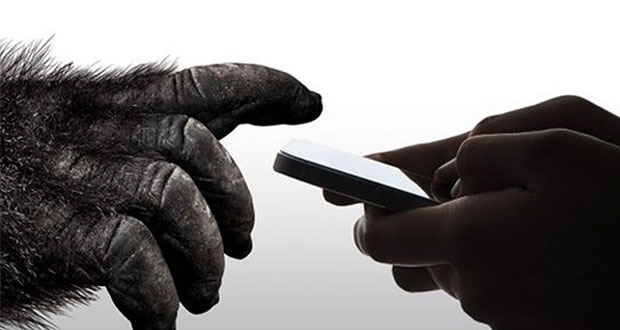Scratches on smartphones: This is why the situation does not improve despite new materials
Scratches on smartphones seem to be an increasingly common problem, and it seems that its solution is not expected in a short time.
Smartphones are improving from year to year on several fronts: they increase performance, improve display quality and cameras, and advance security. However, in terms of scratch resistance, it does not seem that the situation is improving, indeed it seems that our devices are actually getting worse.
This is mainly due to the perception that societies have on our needs: we think, that users prefer greater resistance to breakages, and not to scratches. Today we cannot have both characteristics.
Most smartphones use Gorilla Glass sheets, produced by Corning, which use different mixtures of materials to offer the best possible transparency combined with a very specific compromise regarding resistance, a bit to falls, a little scratches. It seems, that the market requires smartphones that resist falls, and not scratches, and that is why, with the latest generations of Gorilla Glass, Corning is favoring the first feature. Glassmakers have to make a choice, and priority is on impact.
Why? The reason is a mix between the market demand and the natural qualities of glass: given that glass cannot be both impact-resistant and scratch-resistant, it is necessary to choose in the design phase what to give preference.
The first Gorilla Glass was born from the need of Steve Jobs to create a glass that protected the original iPhone from scratches and cracks, and Corning had about six months to design it: before the first iPhone smartphones used a resistive touch with a plastic film, suitable for use with the stylus, less for use with the finger.
Just as then, Corning’s design of Gorilla Glass was based on the demands of smartphone makers, and until today they have been looking for thinner and lighter panels that are also resistant to falls. In recent months, Digital Trends interviewed John Bayne, VP of Corning’s Gorilla Glass division, who stated that ” the number one fear of users is still breaking their device “, and that’s why in all the latest generations of panels the company has given priority to the resistance to breakage, and not to scratches.
The same Corning has stated that Gorilla Glass 6 can withstand 15 falls of one meter in height, suggesting that the tendency is still to look for a glass that responds well more to breakages than scratches.
Corning uses various chemical processes, including salt baths for chemical hardening, but with this process, the glass becomes more prone to bending, and also to falls, but the surface becomes more susceptible to scratches. As William L. Johnson, professor of materials science at the California Institute of Technology, points out to The Verge, glass with these characteristics is no longer harsh, and it is the hardness that sets the resistance to scratches.
Gorilla Glass has not improved on the scratch resistance since 2014 and, according to this document reported by the source, in a test of 2016, it seems that Gorilla Glass 3 is much more resistant to scratches of 4, and Gorilla Glass 5 has recorded results the other two models.
However, it must be said that a specific test cannot establish the scratch resistance of a particular glass, and this is the line adopted by the company to explain those results. Corning herself claims to have never overshadowed the resistance to scratches, and that the differences found in the test would not be visible to the naked eye.
An answer to the problem could be the new Gorilla Glass SR+ and DX+ glasses, created for smartphones and wearables (already used on Galaxy Watch) with the aim of ” reaching the scratch resistance of the sapphire “.
At the moment, this technology seems to be anchored on the smaller displays of smartwatch due to design problems on larger surfaces. The new glass may not completely solve the aforementioned problems, with the additional protective film that seems to be the solution to the problem over the long term.

